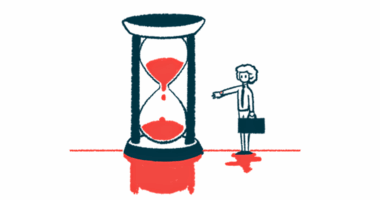How to manage hemophilia joint pain
Bleeding into the joints affects about 70 to 80% of people with hemophilia.
In the short term, it can cause joint pain. Eventually, it can develop into chronic joint problems and a condition called hemophilic arthropathy, which can cause muscles to atrophy, joint instability and deformities, and limited range of motion.
Hemophilia joint health care involves treatments, physiotherapy, and lifestyle adjustments such as doing low-impact exercises, following a well-balanced nutrition plan, and maintaining good mental health.
Rest, compression, and avoiding weight-bearing activities like walking or climbing stairs during recovery can help manage hemophilia joint pain issues.
The impact of hemophilia on joint health
Hemophilia is a rare bleeding disorder that can range from mild to severe, usually depending on the amount of certain clotting factors in the blood.
People with hemophilia have a deficiency in specific clotting factors, such as factor VIII in hemophilia A and factor IX in hemophilia B, that help in the coagulation process. When blood doesn’t clot properly, it can cause prolonged bleeding and other hemophilia symptoms.
Spontaneous or trauma-induced bleeding can occur in joints, particularly in weight-bearing joints like knees, ankles, and elbows. Bleeding may result in hemarthrosis — blood accumulating inside the joint space.
This accumulation of blood triggers an inflammatory response, leading to skin warmth, swelling, and pain in the affected joint.
Repeated episodes of bleeding and inflammation can damage the joint tissues, including the lining of the joint (synovium) and the cartilage. Over time, this can cause chronic joint damage, deformities, and persistent pain.
Joint damage and the formation of scar tissue can limit the normal range of motion in affected joints, contributing to discomfort and problems with everyday activities for a person living with hemophilia.
Prevention and reduction of joint pain
Factor replacement therapies that contain a working version of a clotting factor, such as factor VIII or IX, are the most widely used hemophilia treatments and can reduce the risk of spontaneous bleeding into the joints.
Regularly scheduled infusions can prevent bleeding episodes before they occur, helping to minimize joint damage and pain.
Appropriate treatment in the early stages, at the time of initial pain episodes, has been found to help to reduce joint pain and its negative effects later in life.
Initial symptoms of joint problems
Since hemophilia often begins in childhood, parents should watch for symptoms such as stiffness or difficulty moving a joint, and then check for other early symptoms of joint pain. Adults living with hemophilia should watch for:
- warmth: the joint may feel warm to the touch
- redness: the skin may be redder than usual
- tenderness: a sensitive or sore area that feels painful when touched
- loss of motion: when the joint on one side of the body has less range of movement than the same joint on the other side
- swelling: may be a sign of bleeding into the joint.
For help in identifying and treating a joint bleed and joint pain, contact a specialized hemophilia treatment center. There are more than 140 hemophilia treatment centers in the U.S. and over 25 treatment centers in Canada.
Pain relief strategies
Physical therapy, including personalized exercises, is one of the usual treatments for persistent joint pain in people with hemophilia.
A physical therapist can train a person with hemophilia or their parents about how to do at-home treatment for a joint bleed to reduce joint pain.
First aid involves following the “RICE” protocol, which stands for:
- Rest: Keep off the joint or don’t use it
- Ice: Apply an ice pack to reduce swelling
- Compression: Use a tensor bandage to compress the swelling
- Elevation: Lie down and put the affected joint onto a pillow to keep it above heart level.
A physical therapist can also help a person with hemophilia maintain their joint flexibility and strength through:
- gentle stretching, such as yoga, to reduce stiffness
- balance and stability exercises for better mobility
- strength training to build muscles and support the joints.
Medications can help with joint pain relief. Speak with a healthcare provider to learn about which drugs can reduce inflammation without interfering with blood clotting. This might involve avoiding aspirin and only taking nonsteroidal anti-inflammatory drugs under a doctor’s supervision.
Other therapies such as mindfulness meditation may help reduce the stress from living with a chronic condition like hemophilia. Anxiety and depression may cause a person with hemophilia to stop following their treatment plan, including joint care.
Best practices for joint care
Maintaining a healthy lifestyle, including regular exercise that is safe for a person with hemophilia, eating a balanced diet, and avoiding activities with a high risk of injury, can help support good joint health.
Other tips include:
- stretching throughout the day to alleviate joint stiffness
- scheduling regular checkups with healthcare providers
- minimizing tripping hazards in the home, such as securing rugs
- maintaining a healthy weight to reduce stress on the joints.
Exercises for joint health
The goal of an exercise program for a person with hemophilia is to improve joint stability, along with coordination, flexibility, strength, range of motion, and general fitness.
Some useful exercises for joint health include:
- resistance training to reduce the risk of falls and injury
- aerobic exercise to reduce the risk of obesity and cardiovascular disease
- aquatic hemophilia joint exercises, which put less strain on the joints.
Protective gear should be used during physical activities that involve a higher risk of injury, including those that involve running and jumping, and contact sports.
Always consult a healthcare provider before starting an exercise program, which should be adapted to a person’s needs, abilities, level of fitness, and the overall condition of their joints.
Hemophilia News Today is strictly a news and information website about the disease. It does not provide medical advice, diagnosis or treatment. This content is not intended to be a substitute for professional medical advice, diagnosis, or treatment. Always seek the advice of your physician or other qualified health provider with any questions you may have regarding a medical condition. Never disregard professional medical advice or delay in seeking it because of something you have read on this website.
Recent Posts
Related article

 Fact-checked by
Fact-checked by 




